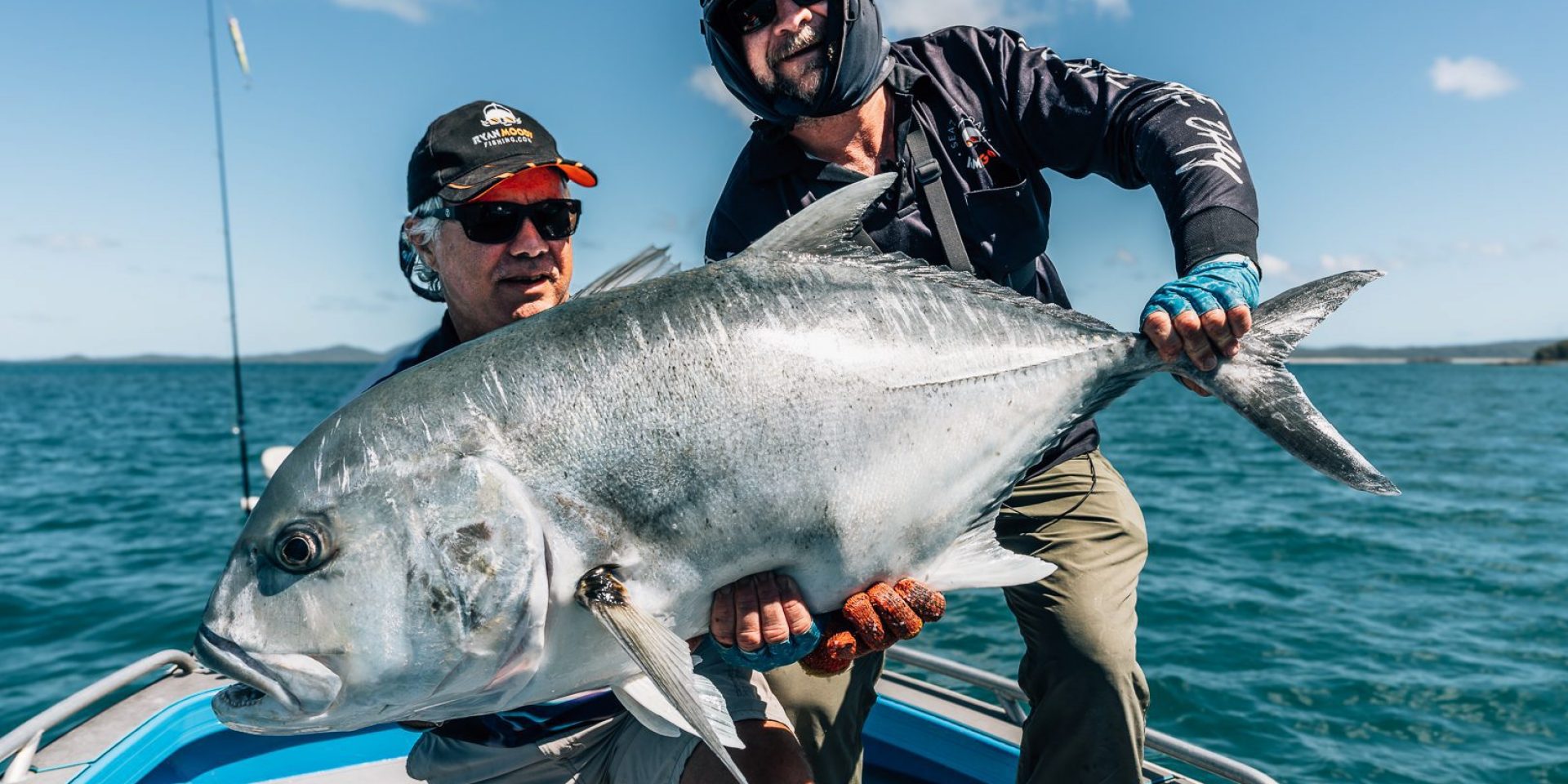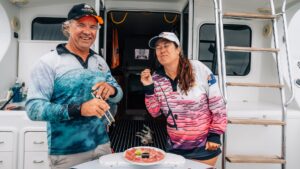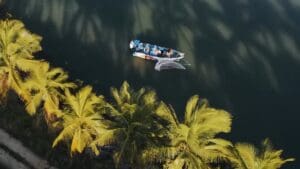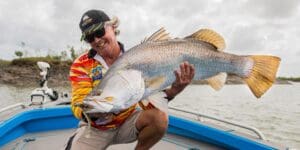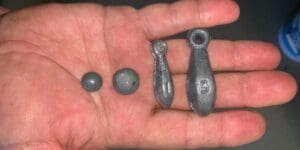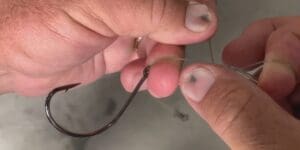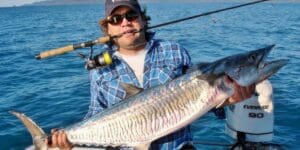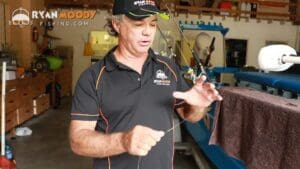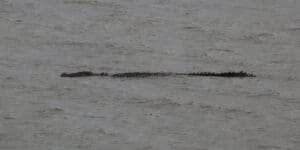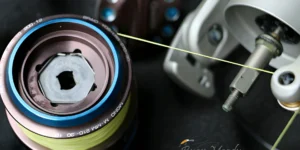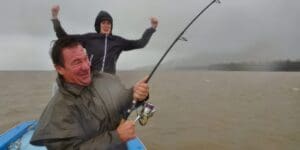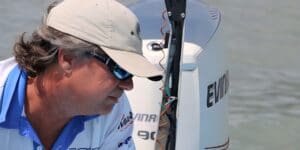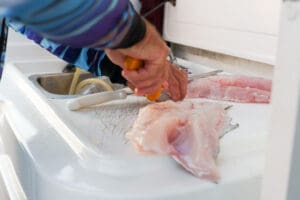Estuaries, where freshwater rivers meet the salty ocean, are rich ecosystems and hotspots for anglers seeking encounters with pelagic species. On a recent trip to Central Queensland’s Port Clinton, we experienced an action-packed pelagic fishing adventure. The mix of ocean and freshwater creates a unique environment where various pelagics thrive, offering endless surprises for anglers. This blog post provides insights into the species we encountered and tips for those looking to explore similar waters.
Understanding Pelagic Fishing In Estuaries
Estuary Pelagics are fish that usually live in the open ocean but come into estuaries to hunt for food. These fish can include some of the most sought-after catches for recreational anglers. They’re known for their toughness and strength and often put up formidable fights that test anglers’ skills and equipment (And sometimes their backs too!).
Pelagics that are found in estuary environments consist of a range of species, including the following:
- Grey Mackerel: A schooling fish known for its speed and acrobatic fighting style.
- Big GTs (Giant Trevally): Powerful predators that can grow to impressive sizes –> Fishing Tips for Giant Trevally!
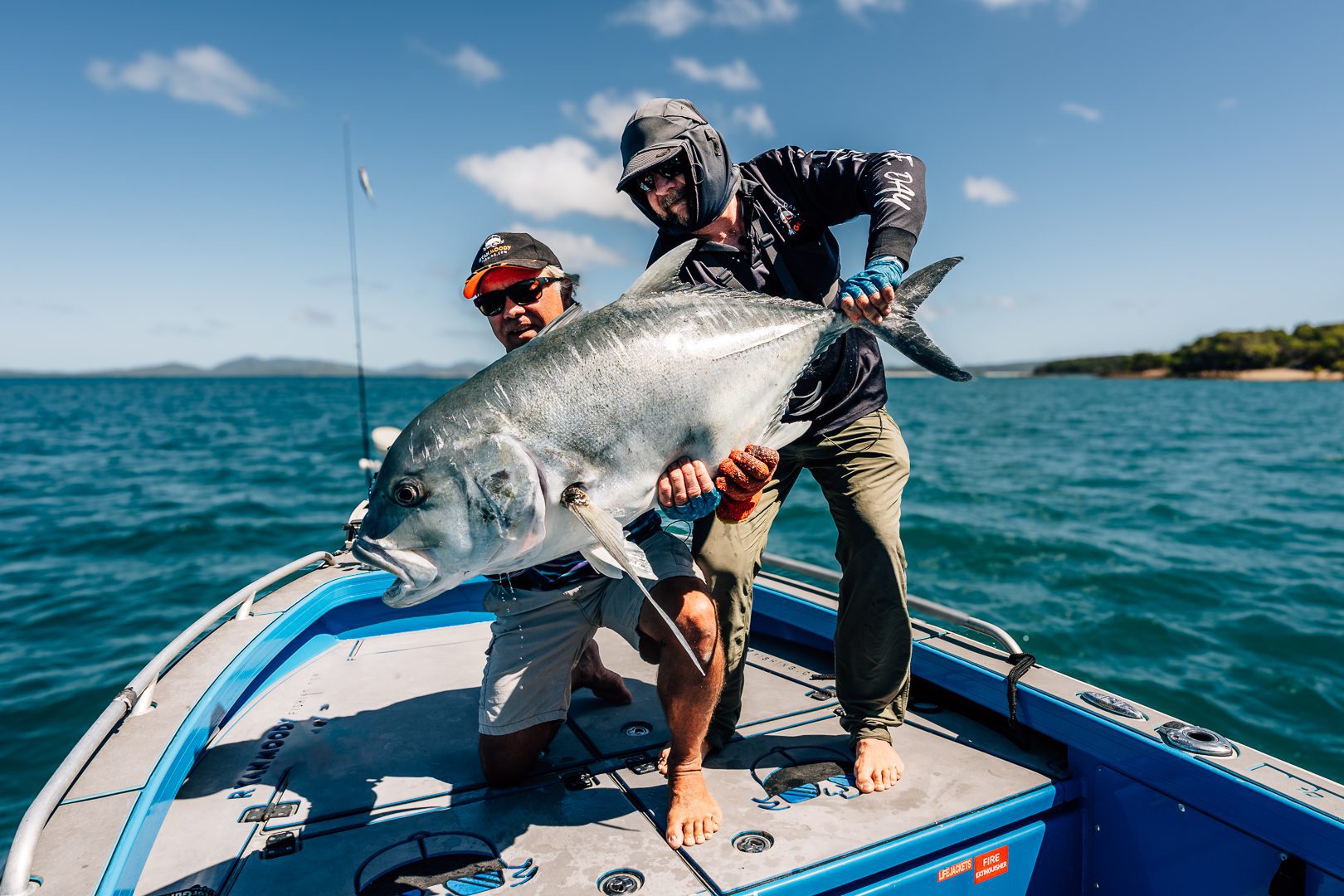
- Various Tuna Species (e.g. Bonito): These highly sought-after fish are known for their speed and endurance.
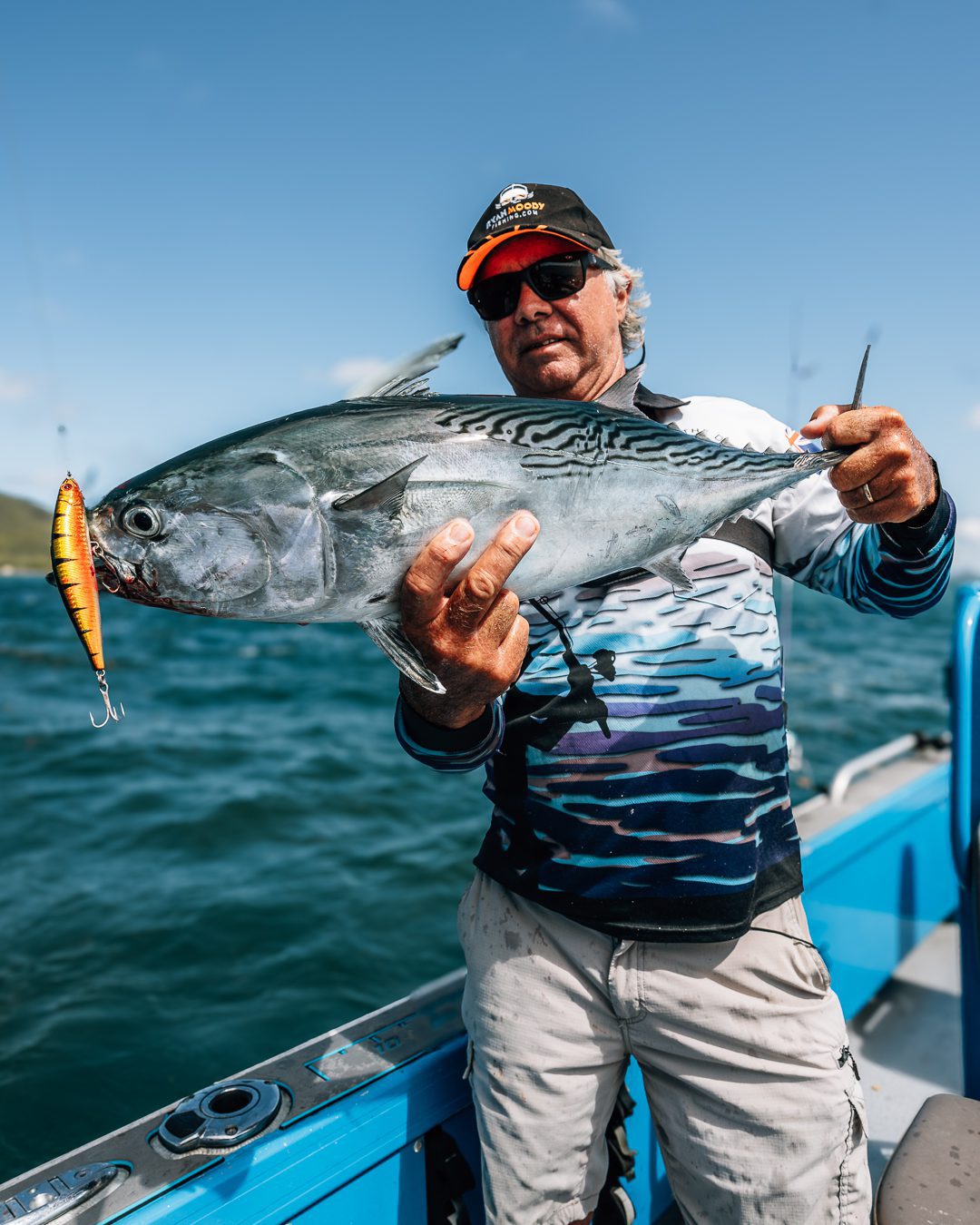
- Queenfish: Fast and aggressive feeders that put up a good fight.
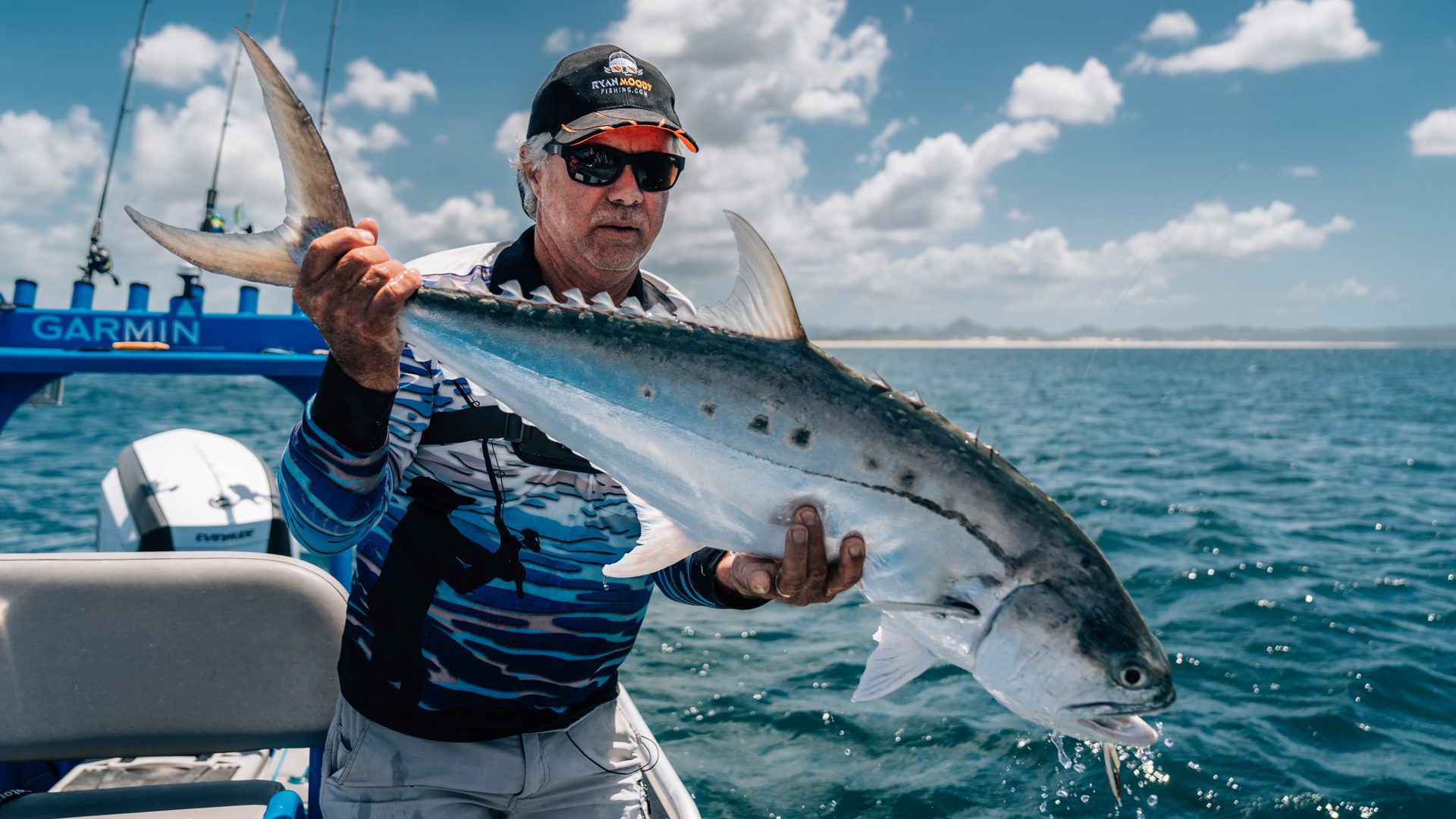
- Tailor: Another hard-fighting fish prized by anglers.
Our latest Youtube Video offers a firsthand glimpse into the excitement of pelagics fishing in estuaries. We not only encounter Queenfish and fight Mack Tunas but also hook up a 10kg+ GT, that Ryan challenges to reel in during a 20 minute fight.
Tips for Anglers When Fishing For Pelagics In Estuaries
1. Finding the bait
- Look for surface activity and diving birds Small splashes, baitfish skipping on the surface, and the presence of diving terns or gannets are good signs that baitfish are being pursued by pelagic predators.
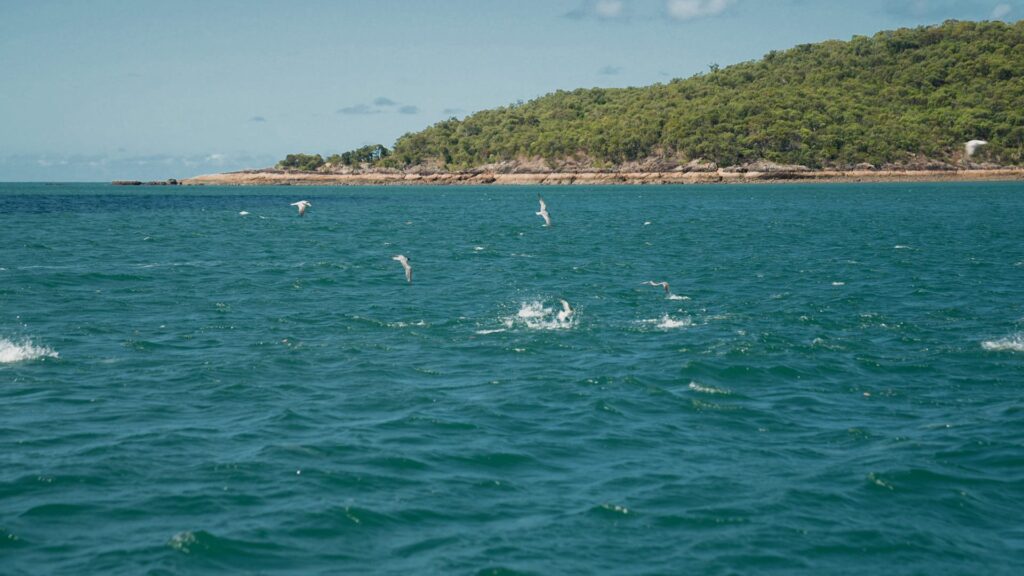
- Look for colour changes and bait schools on the sounder Baitfish schools will often show up as bait balls or clouds on your fish finder, especially around current lines, depth changes, or colour variations in the water.
- Check out our Locating Livies course for chasing all manner of live bait and bait habits Learning about live bait is very productive for all manner of fishing. Where there is bait there is generally big fish.
2. Ideal Estuaries for Pelagic Fishing
Our video highlights that not all estuaries are created equal for encountering pelagics. Estuaries with cleaner waters and characteristics resembling rocky headlands with sand (as opposed to muddy bottoms) are more likely to attract baitfish (like herring) that these predators follow. These open-water estuaries also allow anglers to use lighter gear while still having space to battle large fish.- Current lines: Areas with currents and tidal flows that create rips, eddies, or colour changes often attract baitfish and the pelagic predators that feed on them like giant trevally, and queenfish.
- River mouths: The mix of fresh and saltwater at river mouths creates an environment that draws in baitfish and pelagic species like mackerel and tuna species. Garfish will also quite often come inshore in the winter months as well and this is when big Spanish Mackerel and big GTs can follow. For those keen on trolling when the garfish are inshore, try this rig.
- Clean Rocky Headlands: These areas attract herring schools and are a popular haunt for Queenfish and Giant Trevally (GT’s). In some cases at low tide, herring are pushed off the rocks into open water where other pelagics like mackerel and tuna can smash them.
- Channels, drop-offs, and holes: Deeper channels, holes, and drop-offs provide holding locations for species like herring, especially around tide changes, where pelagics can hunt baitfish.
- Weed beds and isolated rocks: Submerged isolated rocks and weed beds are prime areas for baitfish to gather, attracting pelagic predators.
3. Common Gear for Pelagic Fishing in Estuaries
-
Rods:
- Spinning Rods: A popular choice for estuary fishing, offering a good balance between casting accuracy and fighting power. Look for rods in the 6”6 to 7′ range with a weight rating of 6-10kg depending on the target fish.
- Baitcasting Rods: These more specialised rods similar to what you would use for barramundi, don’t quite have the casting ability (or retrieve speed) as a spin rod but are a great challenge to catch estuary pelagics on light gear. And that’s what happened in the video. Sign up for our gear and tackle cheat sheet for options on all manner of gear and electronics used by us.
-
Lines:
- Braided Line: The braided line offers superior strength, a thin diameter for long casts, and good sensitivity for feeling bites. Common choices include 8-10 kg braid depending on the target fish.
- Fluorocarbon Leader: While a fluorocarbon leader can be used for abrasion resistance against rocks and oyster beds, a good quality mono leader like Ande will suffice. Use a leader with a breaking strength of 60-80lb. A wind-on-leader system is essential for casting long distances. Leader line length depends several of factors outlined here.
-
Lures:
- Shallow Diving Hard Bodies
Shallow diving hard bodies reach pelagics feeding just below the surface and mimic baitfish with erratic retrieves, like our “Scaleblazer” lure used in the YouTube video. All Scaleblazer purchases come with directions for use. We have had great success on the reef chasing huge GT’s with these lures. We have a blog on upgrading your hooks to ensure you don’t lose bigger fish. If you snag them up, use this technique to get them off snags. - Soft Plastics
Rigged on strong hooks (5/0 to 7/0), these are popular choices. They effectively mimic baitfish and can be used with various retrieves to attract pelagics. - Chrome Metal Slices
Favoured for their ability to cast long distances and imitate a range of baitfish. Effective for high-speed retrieves, they come in various sizes to match local baitfish. Smaller models for species like tuna and spotted or grey mackerel. Larger models for Spaniards and GT’s. - Poppers
Used for surface action, poppers can be very effective when pelagics are feeding on the surface. They create commotion and trigger aggressive strikes. - Sinking Stickbaits
These versatile lures can be used for jigging above pelagics (like queenfish and trevally) or can be cast at tuna schools while they are crashing on the surface. Sinking stick baits, because they flutter in the fall, you’ve got a chance to pick up a variety of pelagics mid-water, like this Spanish Mackerel.
- Shallow Diving Hard Bodies
-
Knots:
- Wind on leader system
Take the time to learn the knots required for the wind-on leader system. We explain why we don’t use swivels here. - Perfection loop
I’ve had snap swivels fail when catching big fish as they can open them with their jaws. Don’t risk it and learn the perfection loop.
- Wind on leader system
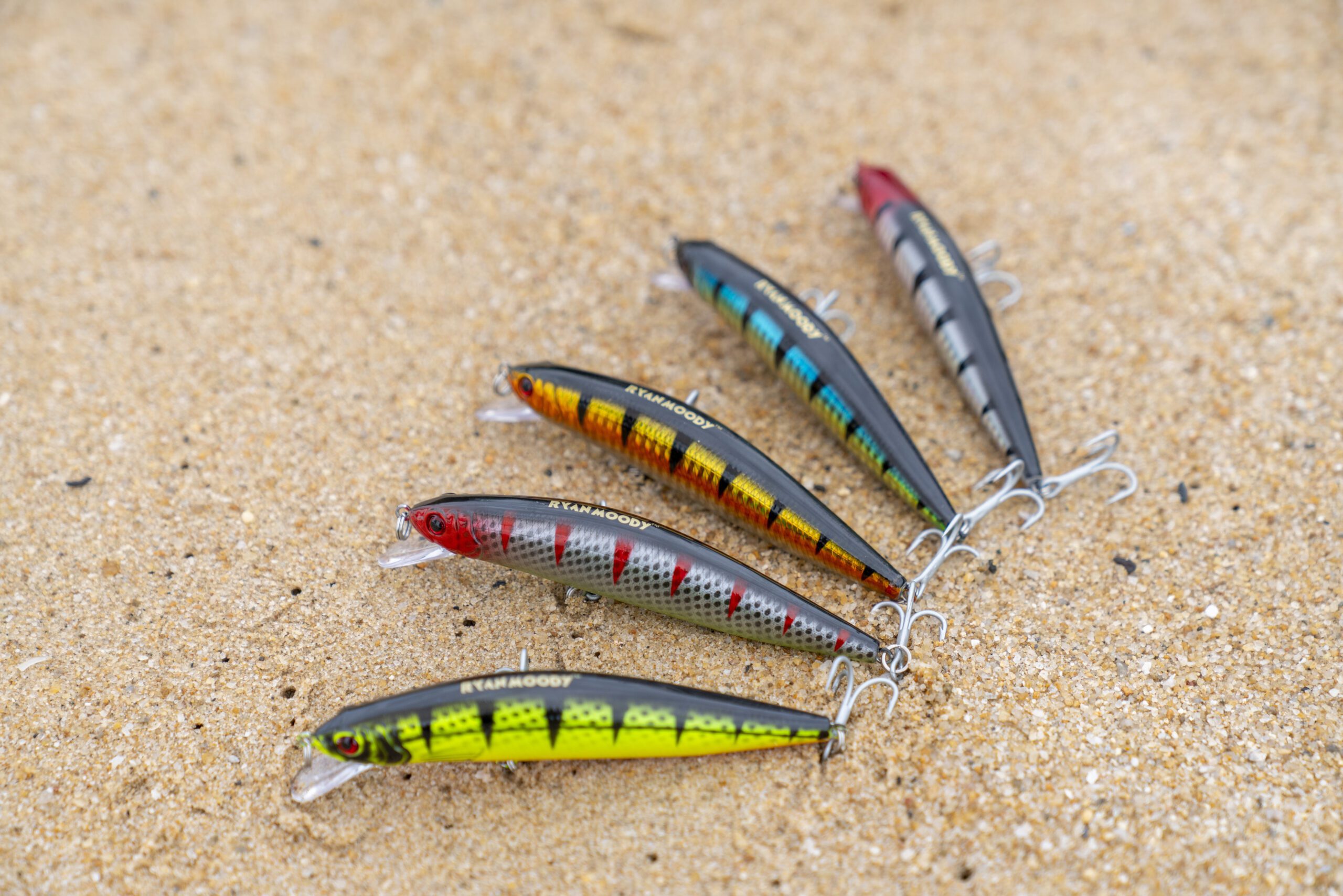 Our Scaleblazer lures give you a range of options for chasing big fish. From barramundi to GT’s and Spanish Mackerel, they are dynamite when a shallow diving minnow is required.
Our Scaleblazer lures give you a range of options for chasing big fish. From barramundi to GT’s and Spanish Mackerel, they are dynamite when a shallow diving minnow is required.
4. Pelagic Fishing Techniques
- Match the lure size to the local baitfish
Pelagic predators target specific baitfish. Tuna prefer small bait fish (that the small terns dive on) and Spanish mackerel and giant trevally (GT’s) prefer bigger bait like garfish which are dived on by bigger birds like gannets. It is crucial to match your lure’s size and profile to what they are currently feeding on. Common baitfish in estuaries include mullet, herring, and garfish. - Consider lure action and retrieve
For aggressive surface feeders like trevally or queenfish, use fast erratic retrieves or surface lures like poppers and metal slices. - Live Baits
In clean estuaries around tide changes, large live baits like mullet, can attract a GT as they go deeper around the tide change. To easily catch live bait (even at high tide) check out our locating livies course. A whole fresh gar on ganged hooks unweighted and floated out with current can attract Spaniards in major clean water estuary systems in winter. - Fishing with the Tide
Understanding the tide is crucial. At higher stages, fish are spreading over sand flats, weed beds, and rubble patches. In lower stages, they’re retreating into channels. Predators often wait on the edge of channels or the mouth of drainages for smaller fish and crustaceans to be swept toward them.
Challenges For Fishing Pelagics In Estuaries
- Sharks: Sharks often follow schools of baitfish, which attract larger pelagics but also pose a threat to hooked fish. Anglers must be quick and smart to land their catch before a shark gets it. Our video demonstrates sharks hanging around with GTs and Queenfish.
- Stamina: Reeling in large pelagic fish is very tiring and can involve long battles. Anglers need strength and endurance to succeed.
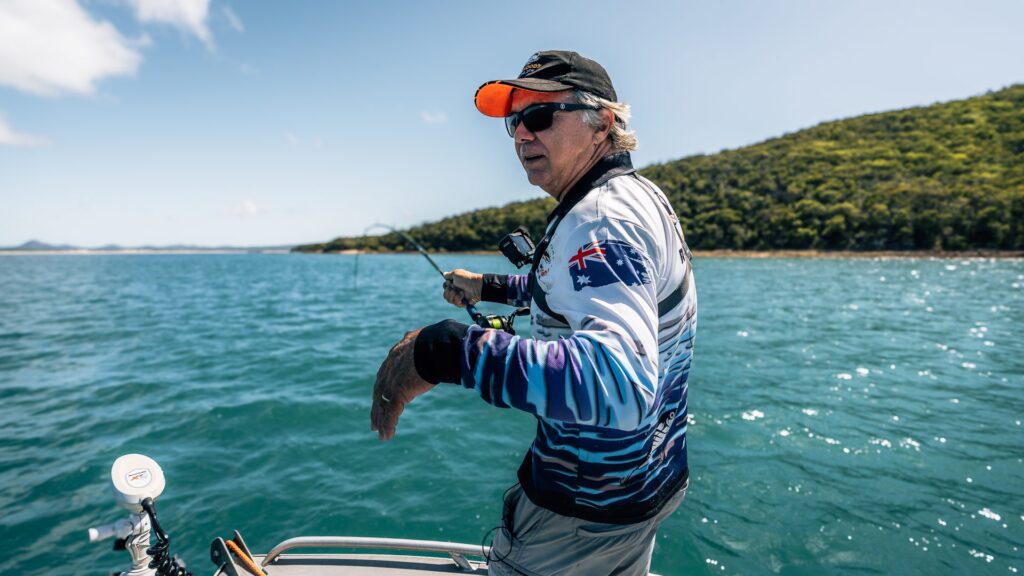
- Lost Fish: Estuaries often have hidden structures like rocks and logs that can snag or break the line during the fight. Be careful if they take you towards isolated rocks. Also, the strong runs of large pelagic fish, like that big GT, can cause fishing lines to break, especially if your drag is not sticky and not well maintained (we show you how here), if it’s not set correctly, or if the line if frayed (always check!). We show you how to service your drag here.
- Mobility Of The Fish: Pelagics move a lot and will go in and out of estuaries based on changing conditions like water temperature, salt levels, and the presence of baitfish.
Find the Bait, Find the Fish!
Estuary pelagics offer an exciting fishing adventure for anglers due to the variety of species, their fighting spirit, and the element of surprise.
Understanding their behavior and habitat preferences is key. While estuary pelagics might not be a specific course offering, the knowledge you gain from our existing courses can be incredibly valuable for targeting these hard-fighting fish.
Sounder Skills: Understanding your fish finder is crucial for success. Learn to “see” the underwater world, identify baitfish schools, and locate potential holding areas for pelagics.
Unlock the basic secrets your sounder holds –> ON SALE – Sounder Skills 1.
Sharpen your sonar skills. Enroll in our comprehensive Sounder Skills 2 today –> Sounder Skills 2.Locating Live Bait: Boost your pelagic fishing success by mastering the art of finding live bait, a vital food source for pelagics. Learn proven techniques to target baitfish like mullet, herring, and prawns, which can lead you right to the predators themselves.
Check out the Locating Live Bait course –> Locating Livies.
BECOME A MASTER ANGLER WITH RYAN MOODY FISHING
Feeling inspired to experiment with pelagic fishing in creeks and estuaries? Take your fishing skills to the next level with our online courses.
Our comprehensive courses cover everything from essential fishing techniques to species-specific strategies.
In addition, here are a few more FREE resources you may find helpful and entertaining.


